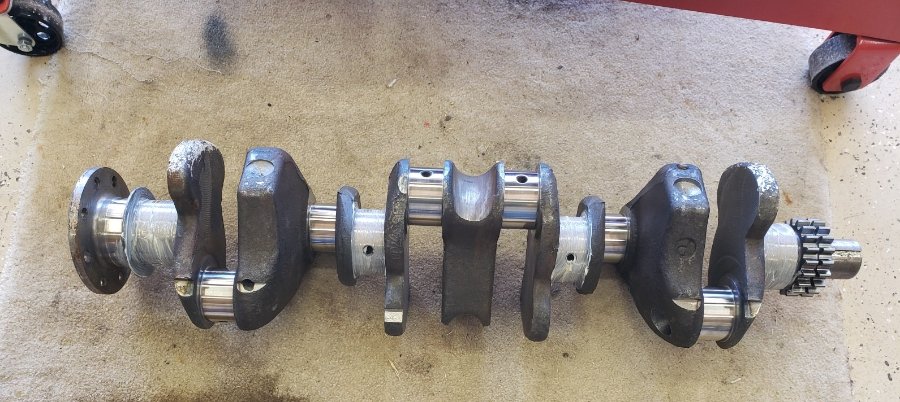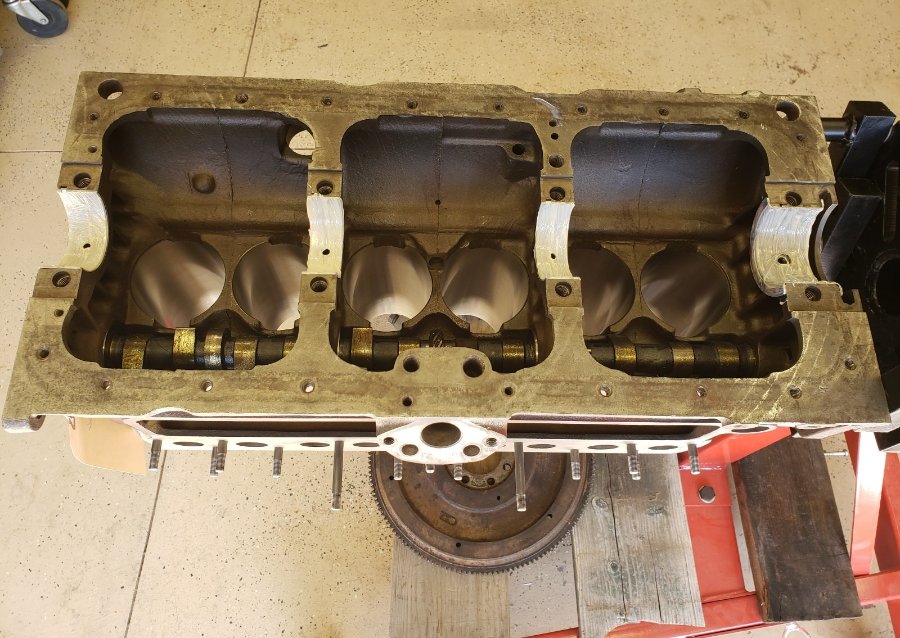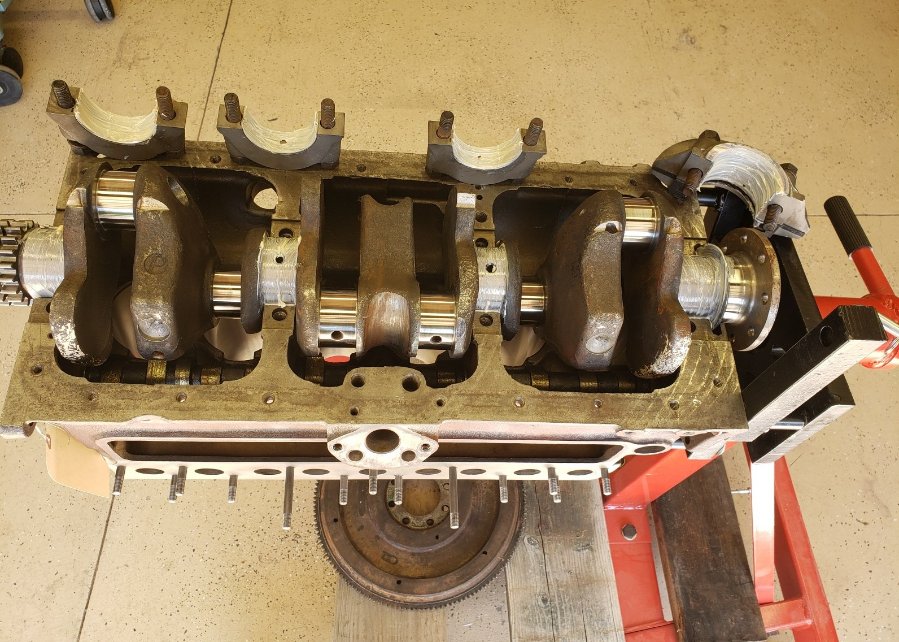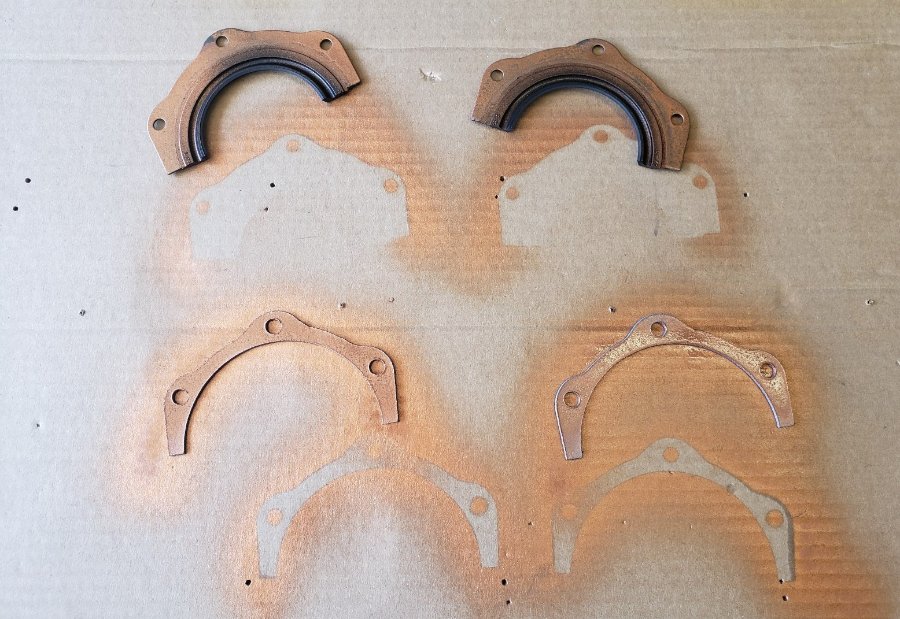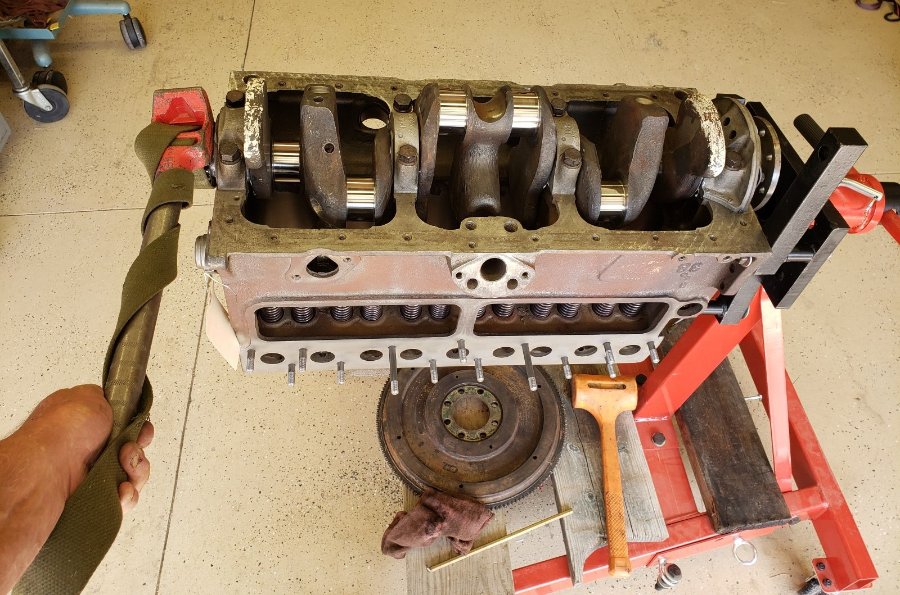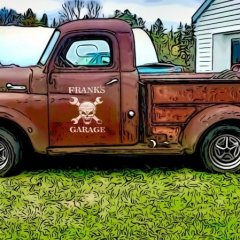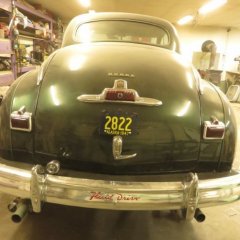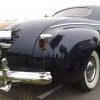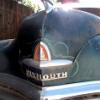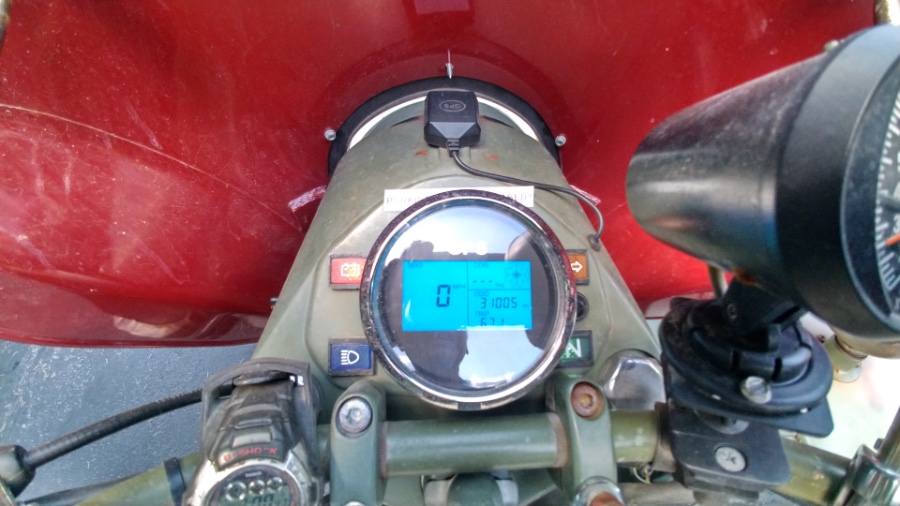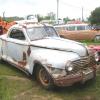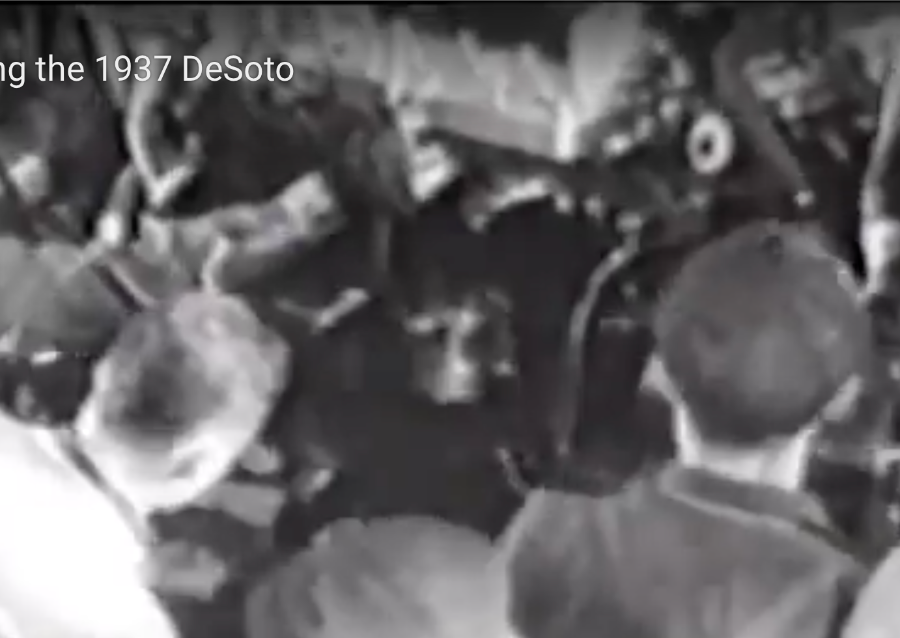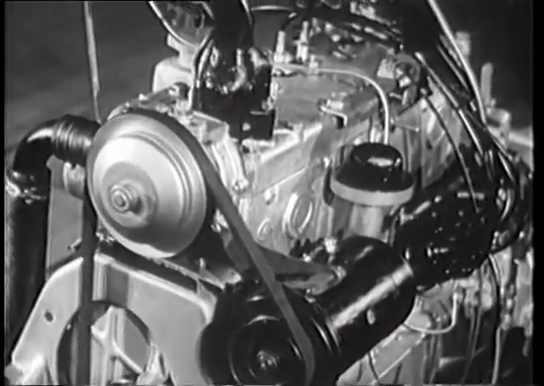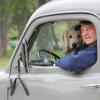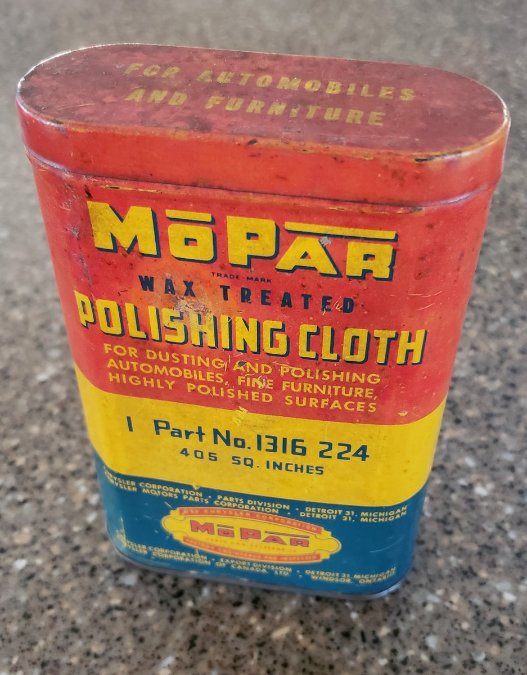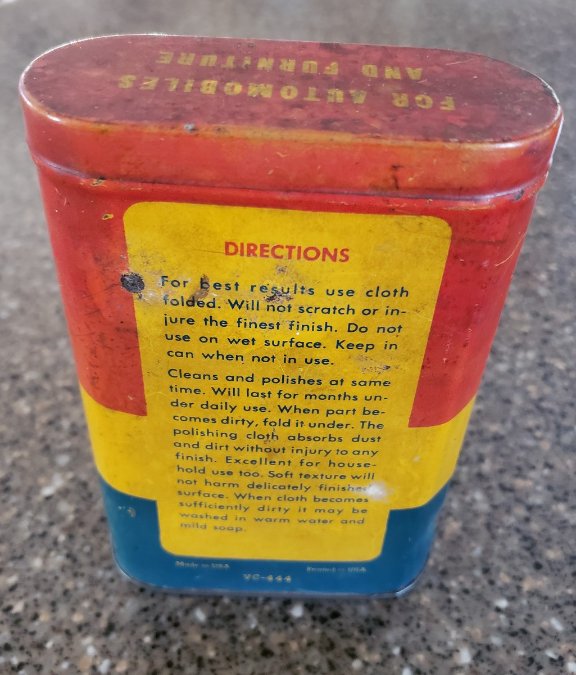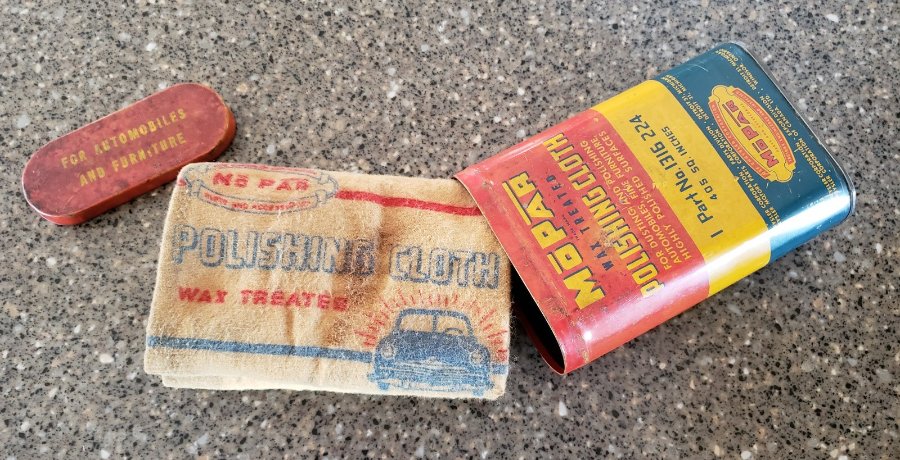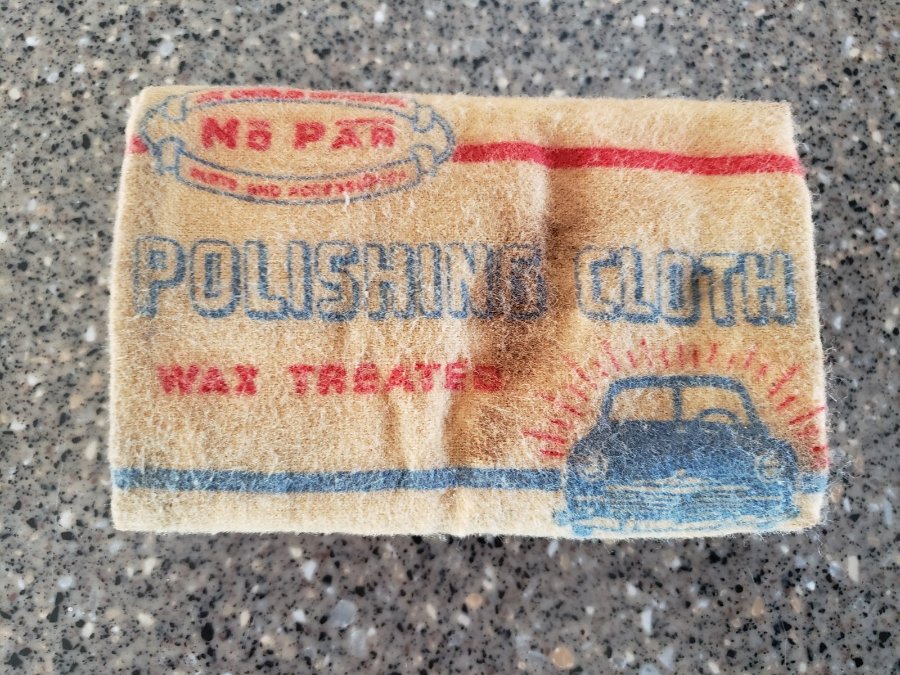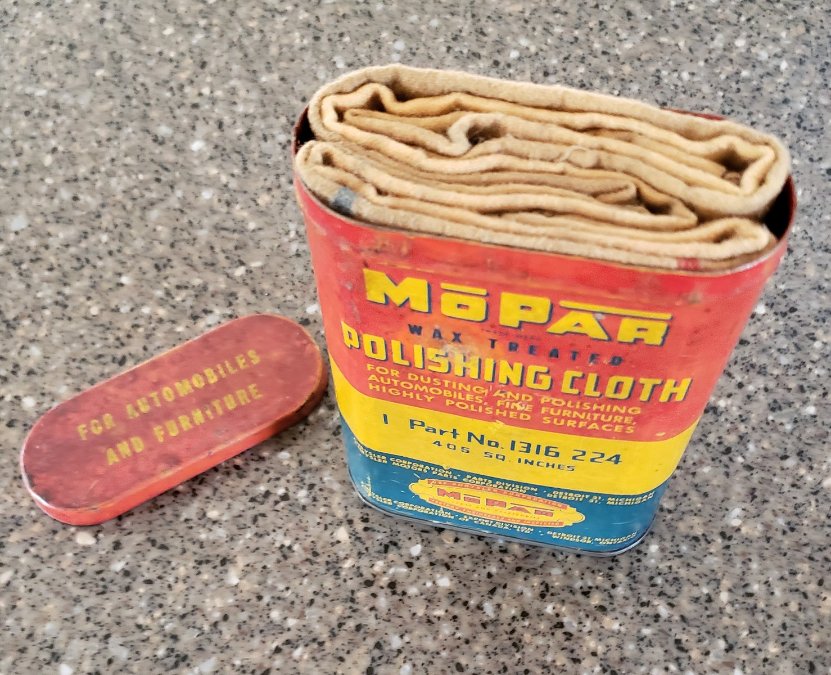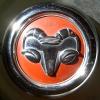Leaderboard
Popular Content
Showing content with the highest reputation on 06/06/2021 in all areas
-
Hello! Just bought an hour ago this 1948 Dodge coupe. The gentleman said it hasn't been driven in 7 years and this is my first experience with a car this old. Aside from a new battery and an oil change, what else might you guys recommend before I try to start her? Any idea what kind of oil it takes? Tricks n tips? All advice is appreciated.2 points
-
oh yeah....I think Jasper was green....but been a long time since I seen a fresh Jasper of this vintage. Anyway....silver is the go to in my book....BUT any color you want is CORRECT.....just don't expect a 100 point for engine cosmetics at the show.....lol2 points
-
Yes, rebuilders often painted the engines in their "own" colors. I.e., Sears rebuilds (marketed as replacements) were a red color. And Chrysler products dealers often obtained replacement engines from other companies. Just me, but I have doubts that any original flat 6 MoPar engine was other than silver. I've never seen an original engine that wasn't. Although I imagine there are some quirks out there for various reasons. I also take "experts" with a grain of salt. I know many that are mistaken on some things, but because they are "experts", they refuse to acknowledge it.2 points
-
Over the years I've read that many owners of the Fluid Drive have to push the gas pedal right through the floor in order to get the car to downshift when it's needed. Sometimes with success and sometimes without success. The later being my issue since I purchased the car. Finally I decided to investigate . I did the trouble light test and the bulb lit up just fine once that plunger was depressed about 8/10th of the way in. Which told me the issue had to be something mechanical. I propped a stick between the seat and gas pedal after adequately protecting the front of the seat with a piece of plywood. Once I was confident that the pedal couldn't go any further down, by even removing any carpeting that might get in the way, I check the location of the lever bracket that would engage the plunger on my Carter B&B carb, that would in turn set off the process of downshifting. The arm on that bracket was still about 3/16 in. away from making contact with the brass plunger arm. For some of you that might not be familiar with the set up, the round shaft that the throttle plate is fastened to is round as it comes out of the back of the carb and then the last portion has a flat section on it. Which marries up the the "D" shaped hole in the bracket. Meaning it can't be adjusted in a clockwise/counter clockwise rotation. Since the idle needs to be at 450 rpm and not 3000 or so rpm, there's no way that plunger in the carb will ever get depresses, by adjusting the gas pedal linkage arm, at least on my car. So I got a piece of UHMW plastic and made up a spacer attachment on my bandsaw to slip over the activating arm section of that bracket. It now works like a dream every time. I just happened to have white UHMW about the right size, but now that I have the shape I need and I know it works, I'll probably make it out of black UHMW so it doesn't visually stick out like a sore thumb. What still baffles me is why there was so much of a gap between the plunger and the bracket when the gas pedal was depressed as far as it would go. My other 3 Carter B&B EV1 carbs and carb throttle brackets are the same.1 point
-
PB blaster I I think is good for breaking loose rusted bolts ....I will not say it is best oil for lubricating door hinges ... many will have own opinions, if nothing else it is oil and better then nothing. If your wiring is original cloth, you can bet it needs replaced. ... my 49 was and totally shot ... cloth falling off it. You need to inspect what you have, if it is cloth chances are the headlight & tail light wire running in hidden places need replaced ... just disconnect all of that with the main power wire going from your battery to the car ... just run a jumper wire from battery to coil to hot wire it ... whatever you need for to get the solenoid to turn the starter over. Then work on wiring ... who knows it may have already been replaced and fine ... you do need to investigate it.1 point
-
1 point
-
WD40 is a cleaner not a lubricant. iirc was created as a wing de-icer for airplanes. And it is a very good product, but is not a oil. A good example, when I worked in a tire retreading shop, everything was ran by air ... air tools would get gummed up & lose power. Clean with WD40 & regains power, but now you need to add a oil to lubricate them. You can spray wd40 on a car door hinge and it works smoother and stops squeaking because is clean, now you need to oil it.1 point
-
The first thing I'd do is bookmark this forum. You'll soon discover that you're on here more than any other site on the internet. If you have time, go back in time on this forum and read lots of threads that relate to your car. Lots to learn on here. But don't rely on the search engine for this site to find things. If you're in a position where dropping the oil pan is not on the immediate list of things to do or you're having difficulty getting the proper gasket set, then start by changing the oil every 500 miles or so. I did that for the first couple thousand miles. Each time it was black after each oil/filter change. Now I've stretched that out to 1000 miles and I can now see the dip stick instead of black oil. After buying a service manual and parts manual I suggest you watch every You tube "Chrysler Master Tech" videos for 1948. Yep they are a little corny, but they are full of valuable information.1 point
-
1 point
-
I have a charging problem with the Pontiac. Generator is off to be rebuilt. It's licensed and insured. Just waiting on the gen.1 point
-
1 point
-
It got to 90 here today. Was out and about with temp at 170. Got in a four car queue to get into a car show. Temp went to 185. After shut down the gauge was at 200, when I left it was down to ambient. I run regular glycol at 70% water, 30% coolant.1 point
-
BUYER BEWARE! Big time here. The stock cast iron drum is riveted to a steel flange, the flange is then, as you know solidly attached to the steel axle shaft.the steel carries the lug bolts and thus the weight of the corner of the car. These after market pieces are all cast iron. I don't know the particulars but steel is a lot stronger than cast iron. So this piece of cast iron will need to carry the car plus the braking stress. The Chrysler engineers designed the system for the hub to carry the car and the drum just to do the braking. Don't know who is making,or where these castings are made. Has sufficient stress analysis been done on these one piece aftermarket replacements? Use your best judgment and a bit due process before trusting you your family and others sharing the road. You might be farther ahead to update the rear axle from a later car with replaceable drums than supposing on the safety of different from design replacement pieces. Does anyone on this forum have these installed on you vehicle? Are you satisfied with their quality, purpose and performance. Or am I way off in the supposition of using just a cast iron piece is sketchy?1 point
-
1 point
-
1 point
-
Welcome to Mopar ... there is little or no support. You have to ask yourself, are you going to make a original show car or a car you can drive? The $400 sounds correct to me for 1 new brake drum ... then a 2nd drum you have $800 in it, now you still need shoes and hardware. This is why many will swap in a modern axle with modern brakes & highway gears. By all means go original if you want to restore to original, look for used drums ... But yeah, not much support for old mopars ... just used parts when available.1 point
-
Pages from Dodge Truck B Series Loose Leaf Parts List Service Pages 23-1 through 23-4 attached. Pages from Dodge Truck B Series Loose Leaf Parts List Service Pages 23-1 through 23-4.pdf1 point
-
Ok,so now we know it uses non-detergent oil. Now that you know this,you can change the oil to a 30 wt non-detergent oil,plus a new oil filter. If it were me,I would then "filter" the oil I just drained out of it to trap any metal particles or particles of any other type. You can do this by a method as simple as pouring it into a container over a shop rag. The rag will catch the trash. Since you know nothing of the cars maintenence history,plan on keeping a close eye on the oil,and the changing it again when it seems to be getting dirty,once again filtering the used oil so you can visually look at anything that came out. I would suggest taking the gas tank out so you can properly clean it and look for rust. If there is any rust in it,buy a new gas tank. It's cheaper than a ride home on a roll back if you are very far from home. Do NOT forget to visually check the brake lines and hoses,and to look inside the master cylinder to check for rust/dirt. I go a step further than that on mine. I just assume from the beginning there is rust inside the factory brake lines,and that the hoses are dry-rotted and brittle,so I replace them with new copper/nickel brake lines and new hoses. I also replace all the wheel cylinders and the master cylinder with new ones,too. I consider this to be cheap insurance for both the car AND for me. There just ain't NOTHING about the car more important than stopping. Nothing. While you are crawling around under the car doing all this,you might as well check for worn tie rods,steering links,and shocks. Grease up everything that takes grease while you are doing this,and look around for frame damage from rust or accidents while you are at it. After that,I would check the tires for being brittle and cracked. If the car has been sitting for 7 years,you can bet your bippy the tires are not safe to drive on. To ME,all this is more important than how it runs.1 point
-
I would first post a parts wanted ad here. Lots of guys swap rear ends to a better ratio and have complete units left, including the brake drums. Both the prices in your posting seem to me to be overpriced, especially the used one even 'reconditioned'. that likely means bead blasted and turned.1 point
-
Ours wasn't connected to the public telephone service, but we had one in our house where we lived till i was 9. We didn't have a 'real' telephone, so this one just ran a quarter mile to my grandparent's hose, on the other side of the farm. We kids weren't suppose to mess with it, but when Dad was away at work and mom went shopping with grandpa & grandma (before my mom got her license, and Dad bought a second car) we would get a chair outside under the telephone line, and one of us hang onto the wire while someone else cranked the telephone, seeing who could stand to hang on the longest. (It was like an electric fence, giving a low-voltage shock.) When I was growing up there north of Tulsa. there was a "old-timer's" retro station in Sand Springs (I don't recall the call letters) that played Western Swing. Bob Wills & the Texas Playboys, Johnny Bond, Tennessee Ernie Ford, Red Foley, Frankie Yonkovick, etc. Some of those musicians got their start right there in Tulsa, at the Cain's Ballroom. Other What Ever Happened To stuff: Sunday afternoon drives, with no particular destination in mind. Sunday afternoon visits to friends, just dropping in w/o an invitation or any notice. Going to watch a prairie grass fire - I saw a fire jump over the road once when I was still a kid. Or going to watch a house fire. Saw one where the siding was all burned off, and just the glowing studs and rafters, right before it all collapsed. Walking bare foot in the furrow behind the tractor. Taking garden produce over to a new neighbor, to give them a country welcome.1 point
-
I missed the foot clutch, manual shifting and the sound of an engine until I restored my B3B truck. I miss the sound of a two cylinder John Deere. even miss milking a cow by hand., miss home grown fried chicken! Miss milk, cream etc delivered to our front door Miss formations Of 40, bombers and p38’s during WWII being ferried from Detroit to West coast,but don’t miss the war with the ration of fuel, rubber, sugar, while flour, don’t miss the loss of so many young men and women miss the great steam engines1 point
-
I thought this was settled as silver in other threads earlier, and I am thinking about this too for my Dodge truck engine that a previous owner painted Red, but I would like to repaint 2000 degree Silver. See the nice table for plymouths here -- https://p15-d24.com/topic/50095-proper-engine-paint-color-for-a-41-dodge/ Whenever you think you know the answer, it seems there is a contrary example. In the Desoto video (fascinating how they make the body) at 1:14, they lower "just in time" the Desoto power plant that seems to be both Silver and some dark color. Here's a discussion on this site from the early days of 2006 with @JBNeal @Merle Coggins and @Don Coatney https://p15-d24.com/topic/511-silver-engine-paint/ Getting into this hobby, I always had a bit of internal pressure to try to get it "original", but I think there are certain things that can keep the car original and experience the same while also satisfying some internal design satisfaction, or functional necessity to make the object not only beautiful but also very functional. In the end, do what you want that makes you happy.1 point
-
1 point
-
Judging from what LOOKS like freeze plugs being pushed out of the block by rusty water pressure,I would say that crack is not your only problem. Yes,you CAN fix one by welding it up if you or whoever you turn it over to knows what they are doing,but given what looks like all the rust inside that engine,I would just be looking for another block. Try to find one with the same bore and stroke as the one you have now so maybe you can reuse some of the parts in the future. Yeah,so I'm cheap. Sue me! I know if it were ME,I wouldn't think about doing anything to that engine but pulling it out and using it for parts. I hate the idea of having to do the same work twice.1 point
-
Retiring my business, Pilothouse Interiors, LLC. Don't know what I'm going to do with all the patterns, how to do it files, and inventory. Met some really nice people through this club site and would be willing to consider giving some of it away. Right now I'm focused on traveling in my new Airstream, but I will have things to get rid of when I return. john1 point
-
Almost forgot..... Complete Seat Bottom Cushion Will probably NEVER find a matching Seat Back Cushion (this is NOT to be considered a parts request) ? Also picked this up on EBay last week, not sure if it is NOS, but a nice collectable, does not seem to have been used, but not stored correctly either;1 point
-
1 point
-
AXLE--REAR Seal, Pinion, Differential: Mopar 1271105 Chicago Rawhide 18924 National 6017 COOLING Radiator Cap (2-11/16"): Mopar 776379 Stant 10232 NAPA 7031475 Radiator Cap (2-1/4"): Mopar 795519 Stant 10203 NAPA 7031400 Thermostat (180°F, ext.bypass): Mopar 1124989 Stant 13928 NAPA THM 155 Thermostat (180°F, int.bypass): Mopar 852780 Stant 13478 NAPA THM 191 Thermostat Gasket: Mopar 50082 NAPA THM 1040ST Water Pump (external and internal t-stat bypass) Gates 42554 NAPA TFW 42554 ENGINE Oil Filter* (sock type): Mopar 676575, 1504092 Wix 51011 NAPA 1011 Fleetguard LF505 Baldwin JC405 Oil Filter Cover Gasket (for Mopar 1265706 or 1503494 filter assembly): Mopar 685625 Wix 15480 Welch Plugs (1-5/8") Dorman 550-023 (steel) Dorman 560-023 (brass) Melling MEP-14B (brass) HOOD Bumper, Hood (B-1, B-2, COE): Mopar 846797, 985563 BK 6652262 Bumper, Hood (B-3, B-4): Mopar 995066 BK 6653122 UNIVERSAL JOINTS Universal Joint: Mopar 1321115 Precision 369 Universal Joint U-Bolt: Mopar 1122683 Spicer 2-94-28X Neapco 1-0089 Yukon YY-UB-002 Allstar ALL69015 SUSPENSION Shock Absorber* (front): 1243637, 1315411, 1311188 Monroe 31000 = Monroe 59001 = Monroe 32293 - Gabriel 81147 = Gabriel 82047 Shock Absorber (front): 1450066 [1-3/8"] -- Monroe 34904 - Monroe 37098 - Monroe 37112 - Gabriel 61500 - Gabriel G63689 Shock Absorber (rear): 1243639, 1326074, 1450060 Monroe 32207 = Monroe 59017 - Gabriel 81676 - Gabriel 82007 Shock Absorber (rear): 1450065 [1-3/8"] -- Monroe 555004 - Gabriel 61550 = Gabriel G63949 - Gabriel G63299 Shock Absorber (front & rear): 1321268, 1450059, 1450060 [1-3/8"] -- Monroe 66858 - Gabriel 82065 STEERING Seal, Shaft, Steering Gear: Mopar 1138282 National 240151 TRANSMISSION Seal, Pinion, Speedometer: Mopar 1134949 Honda 91204-HB3-004 Seal, Output Shaft: Mopar 600420 National 5737 National 1216N National 8160S SKF 15620 SKF 15729 SKF 15753 Timken 471827 CR 15620 NAPA NOS 15620 SKF Speedi-Sleeve for Output Yoke Chicago Rawhide 99157 Chicago Rawhide 99159 Seal, Output Shaft: Mopar 593596 National 450308 Chicago Rawhide 21210 WHEELS Lug Bolt, Left: Mopar 856981 BWP M-226 Lug Bolt, Right: Mopar 393984 BWP M-225 Lug Stud, Left: Mopar 913849 BWP M-1271 [requires heavy modification] Mopar 1273555 BWP M-93 Lug Stud, Right: Mopar 913848 BWP M-1172 [requires light modification], BWP M-1270 [requires heavy modification] Mopar 1273554 BWP M-92 Lug Nut, Left: Mopar 913813 BWP M-257, Dorman 611-059 Mopar 1273557 BWP M-249 Lug Nut, Right: Mopar 913812 BWP M-256, Dorman 611-053 Mopar 1273556 BWP M-248 Wheel Bearing, Front Inner Mopar 698395 Bower 14125A Wheel Bearing, Front Outer Mopar 698389 Bower 09074 Bearing Cup, Front Inner Mopar 698394 Bower 14276 Bearing Cup, Front Outer Mopar 698388 Bower 09194 Seal, Front Inner Mopar 668479 SKF 17145, National 5836 Cap, Front Wheel Grease Mopar 600183 NAPA 730-2409 BODY Windshield Wipers Anco 20-12 Trico 33-122 additional information - 1-ton stud/nut comparison additional information - Dodge Power Wagon Interchange additional information - Dodge Power Wagon Master Parts Interchange additional information - heater fan motor and flow control valve upgrades additional information - flathead alternative head bolts1 point
-
you don't even need to have the electrical connected except to the start....a bypass switch for solenoid and a hot wire to the coil....are we starting the car or are we going out to spin the wheels off the moment it hits...this has blossomed greatly...while are are valid points...remember the object is to test fire the engine.0 points

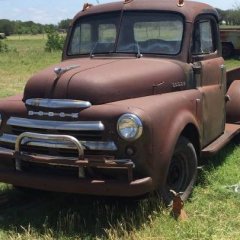

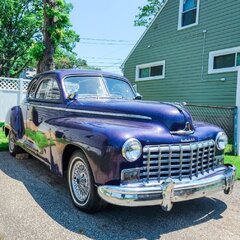

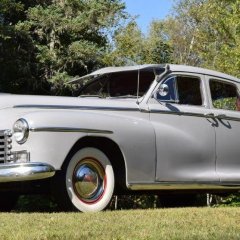
.thumb.jpg.d599d4c13e08899474e0348bd9baed3b.jpg)
.jpg.a9c3c6fef2350b64b56b28a466e2fbc6.jpg)
